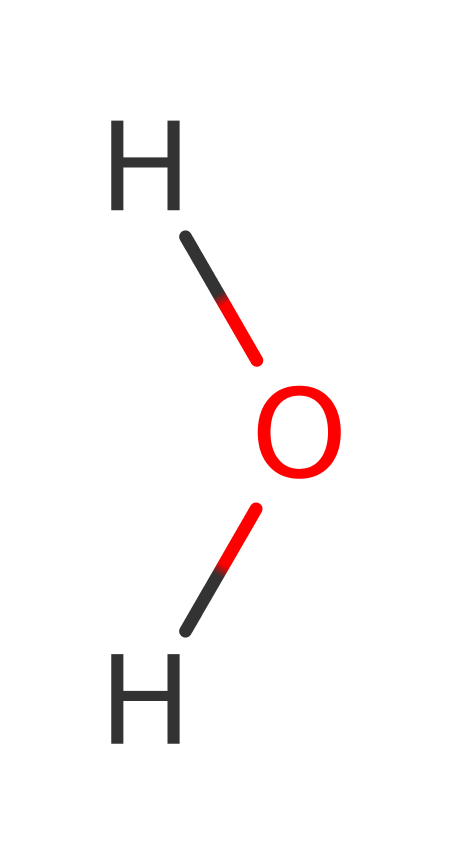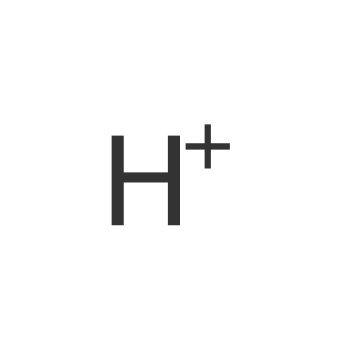Citrate (Si)-synthase
Citrate synthase catalyses the condensation between the carbonyl of oxaloacetate and the acetyl methyl group of acetyl CoA. A reaction considered to be the first step in the citric acid cycle (Krebs cycle) proper.
The product of this reaction, citryl-CoA, remains tightly bound to the enzyme and is hydrolysed to citrate and CoA in a separate chemical step that nevertheless uses the same catalytic residues. Conformational changes of the enzyme during the reaction are believed to be important in the catalytic mechanism.
Although most studies have been done on pig citrate synthase, but the structural equivalence of the amino acid residues implicated in catalysis for the Pyrococcus protein implies that the mechanism proceeds via the same acid/base catalytic process.
Reference Protein and Structure
- Sequence
-
P23007
 (2.3.3.1)
(2.3.3.1)
 (Sequence Homologues)
(PDB Homologues)
(Sequence Homologues)
(PDB Homologues)
- Biological species
-
Gallus gallus (Chicken)

- PDB
-
1al6
- CHICKEN CITRATE SYNTHASE COMPLEX WITH N-HYDROXYAMIDO-COA AND OXALOACETATE
(1.85 Å)



- Catalytic CATH Domains
-
1.10.230.10
 1.10.580.10
1.10.580.10  (see all for 1al6)
(see all for 1al6)
Enzyme Reaction (EC:2.3.3.1)
Enzyme Mechanism
Introduction
The condensation reaction occurs via formation of an enolate intermediate that is produced on removal of a proton from the methyl group of acetyl CoA by Asp 375. Accumulation of negative charge on the carbonyl oxygen during formation of the enolate is stabilised by donation of hydrogen bonds from His 274 and from a water molecule. The enolate now acts as a nucleophile to attack the C2 carbonyl of oxaloacetate, with His 230 acting as a hydrogen bond donor to stabilise accumulation of negative charge on the C2 carbonyl oxygen during the attack.
Cleavage of the citryl CoA intermediate involves Asp 375 and His 274, with the latter functioning to stabilise negative charge on the thioester carbonyl of citryl CoA during the hydrolysis.
Catalytic Residues Roles
| UniProt | PDB* (1al6) | ||
| Asp375 | Asp375A | Removes a proton from the methyl group of acetyl CoA during formation of the enolate intermediate. Is also involved in the hydrolysis of citryl CoA. | hydrogen bond acceptor, hydrogen bond donor, proton acceptor, proton donor |
| Ser244 | Ser244A | Acts as a hydrogen bond donor to His 274, increasing the acidity and hydrogen-bond donor ability of this residue towards the enolate intermediate. | hydrogen bond donor, electrostatic stabiliser |
| His274 | His274A | Acts as a hydrogen bond donor to stabilise accumulation of negative charge on the carbonyl of acetyl CoA during formation of the enolate intermediate. Later stabilises accumulation of negative charge on the same carbonyl oxygen atom during hydrolysis of citryl CoA. | hydrogen bond acceptor, hydrogen bond donor, electrostatic stabiliser |
| His320 | His320A | Acts as a hydrogen bond donor to polarise the C2 carbony of oxaloacetate and stabilise accumulation of negative charge on the carbonyl oxygen during attack by the enolate of acetyl CoA. | hydrogen bond acceptor, hydrogen bond donor, electrostatic stabiliser |
| Arg329 | Arg329A | Plays an important stabilising role on the species arising during the catalysis. Does not participate directly in the reaction. | electrostatic stabiliser |
Chemical Components
proton transfer, assisted keto-enol tautomerisation, overall reactant used, intermediate formation, bimolecular nucleophilic addition, aldol addition, bimolecular nucleophilic substitution, overall product formed, intermediate terminated, intermediate collapse, hydrolysis, native state of enzyme regeneratedReferences
- Karpusas M et al. (1990), Biochemistry, 29, 2213-2219. Proposed mechanism for the condensation reaction of citrate synthase: 1.9-.ANG. structure of the ternary complex with oxaloacetate and carboxymethyl coenzyme A. DOI:10.1021/bi00461a002. PMID:2337600.
- Bennie SJ et al. (2016), J Chem Theory Comput, 12, 2689-2697. A Projector-Embedding Approach for Multiscale Coupled-Cluster Calculations Applied to Citrate Synthase. DOI:10.1021/acs.jctc.6b00285. PMID:27159381.
- Aleksandrov A et al. (2014), J Phys Chem B, 118, 4505-4513. The Mechanism of Citryl-Coenzyme A Formation Catalyzed by Citrate Synthase. DOI:10.1021/jp412346g. PMID:24720842.
- van der Kamp MW et al. (2010), J Phys Chem B, 114, 11303-11314. Testing High-Level QM/MM Methods for Modeling Enzyme Reactions: Acetyl-CoA Deprotonation in Citrate Synthase. DOI:10.1021/jp104069t. PMID:20690673.
- van der Kamp MW et al. (2008), Chem Commun (Camb), 1874-. High-level QM/MM modelling predicts an arginine as the acid in the condensation reaction catalysed by citrate synthase. DOI:10.1039/b800496j. PMID:18401503.
- van der Kamp MW et al. (2007), Proteins, 69, 521-535. Substrate polarization in enzyme catalysis: QM/MM analysis of the effect of oxaloacetate polarization on acetyl-CoA enolization in citrate synthase. DOI:10.1002/prot.21482. PMID:17623847.
- Raaijmakers HC et al. (2006), J Biol Inorg Chem, 11, 849-854. Formate-reduced E. coli formate dehydrogenase H: the reinterpretation of the crystal structure suggests a new reaction mechanism. DOI:10.1007/s00775-006-0129-2. PMID:16830149.
- Yang W et al. (2003), J Phys Chem B, 107, 5986-5994. Computational Study of the Citrate Synthase Catalyzed Deprotonation of Acetyl-Coenzyme A and Fluoroacetyl-Coenzyme A: Demonstration of a Layered Quantum Mechanical Approach. DOI:10.1021/jp034717v.
- Kurz LC et al. (2000), Biochemistry, 39, 2283-2296. Kinetics and Mechanism of the Citrate Synthase from the Thermophilic ArchaeonThermoplasma acidophilum†. DOI:10.1021/bi991982r.
- Donini O et al. (2000), J Am Chem Soc, 122, 12270-12280. QM-FE Calculations of Aliphatic Hydrogen Abstraction in Citrate Synthase and in Solution: Reproduction of the Effect of Enzyme Catalysis and Demonstration that an Enolate Rather than an Enol Is Formed. DOI:10.1021/ja001043i.
- Gu Z et al. (1999), Biochemistry, 38, 8022-8031. Solid State NMR Studies of Hydrogen Bonding in a Citrate Synthase Inhibitor Complex†. DOI:10.1021/bi9813680. PMID:10387046.
- Kurz LC et al. (1998), Biochemistry, 37, 9724-9737. Effects of Changes in Three Catalytic Residues on the Relative Stabilities of Some of the Intermediates and Transition States in the Citrate Synthase Reaction†. DOI:10.1021/bi980325g. PMID:9657685.
- Kurz LC et al. (1997), Biochemistry, 36, 3981-3990. Ability of Single-Site Mutants of Citrate Synthase To Catalyze Proton Transfer from the Methyl Group of Dethiaacetyl-Coenzyme A, a Non-Thioester Substrate Analog†. DOI:10.1021/bi963058s. PMID:9092828.
- Russell RJ et al. (1997), Biochemistry, 36, 9983-9994. The Crystal Structure of Citrate Synthase from the Hyperthermophilic ArchaeonPyrococcus furiosusat 1.9 Å Resolution†,‡. DOI:10.1021/bi9705321. PMID:9254593.
- Boyington JC et al. (1997), Science, 275, 1305-1308. Crystal Structure of Formate Dehydrogenase H: Catalysis Involving Mo, Molybdopterin, Selenocysteine, and an Fe4S4 Cluster. DOI:10.1126/science.275.5304.1305. PMID:9036855.
- Evans CT et al. (1996), Biochemistry, 35, 10661-10672. Active Site Mutants of Pig Citrate Synthase: Effects of Mutations on the Enzyme Catalytic and Structural Properties†. DOI:10.1021/bi960336e. PMID:8718855.
- Kurz LC et al. (1995), Biochemistry, 34, 13278-13288. Catalytic Strategy of Citrate Synthase: Subunit Interactions Revealed as a Consequence of a Single Amino Acid Change in the Oxaloacetate Binding Site. DOI:10.1021/bi00041a003.
- Usher KC et al. (1994), Biochemistry, 33, 7753-7759. A very short hydrogen bond provides only moderate stabilization of an enzyme-inhibitor complex of citrate synthase. DOI:10.2210/pdb1csh/pdb. PMID:8011640.
- Kurz LC et al. (1992), Biochemistry, 31, 7908-7914. Catalytic strategy of citrate synthase: effects of amino acid changes in the acetyl-CoA binding site on transition-state analog inhibitor complexes. PMID:1324723.
- Karpusas M et al. (1991), Biochemistry, 30, 6024-6031. 1.9-.ANG. Structures of ternary complexes of citrate synthase with D- and L-malate: mechanistic implications. DOI:10.1021/bi00238a028.
- Alter GM et al. (1990), Biochemistry, 29, 7557-7563. Mutation of essential catalytic residues in pig citrate synthase. PMID:1702991.
- Remington S et al. (1982), J Mol Biol, 158, 111-152. Crystallographic refinement and atomic models of two different forms of citrate synthase at 2.7 and 1.7 A resolution. PMID:7120407.

Step 1. Asp375 deprotonates the CH3 of acetyl-CoA, with concomitant double bond rearrangement.
Download: Image, Marvin FileCatalytic Residues Roles
| Residue | Roles |
|---|---|
| Ser244A | hydrogen bond donor, electrostatic stabiliser |
| His274A | hydrogen bond acceptor, hydrogen bond donor |
| Asp375A | hydrogen bond acceptor |
| His320A | hydrogen bond donor |
| Asp375A | proton acceptor |
Chemical Components
proton transfer, assisted keto-enol tautomerisation, overall reactant used, intermediate formation
Step 2. The oxyanion collapses, initiating a nucleophilic attack on the carbonyl carbon of oxaloacetate in an addition reaction.
Download: Image, Marvin FileCatalytic Residues Roles
| Residue | Roles |
|---|---|
| His320A | hydrogen bond donor |
| Ser244A | hydrogen bond donor, electrostatic stabiliser |
| Asp375A | hydrogen bond donor |
| His274A | hydrogen bond donor, hydrogen bond acceptor, electrostatic stabiliser |
| His320A | electrostatic stabiliser |
| Arg329A | electrostatic stabiliser |
Chemical Components
ingold: bimolecular nucleophilic addition, proton transfer, aldol addition, overall reactant used, intermediate formation
Step 3. The substrate oxyanion deprotonates water, initiating a nucleophilic attack on the carbonyl carbon of the CoA intermediate in a substitution reaction that eliminates CoA with concomitant deprotonation of Asp375.
Download: Image, Marvin FileCatalytic Residues Roles
| Residue | Roles |
|---|---|
| His320A | hydrogen bond acceptor |
| Ser244A | hydrogen bond donor, electrostatic stabiliser |
| His274A | hydrogen bond acceptor, electrostatic stabiliser, hydrogen bond donor |
| Asp375A | hydrogen bond donor |
| His320A | electrostatic stabiliser |
| Arg329A | electrostatic stabiliser |
| Asp375A | proton donor |






 Download:
Download: